- Gerry Everding, Washington University in St. Louis
- Read Time: 5 mins
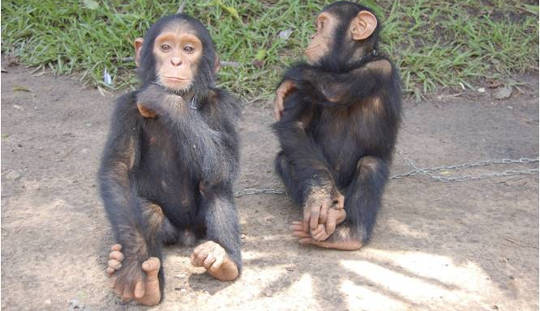 Anthropologists for the first time have captured on video wild chimpanzee mothers teaching their offspring to use tools to find food. The videos were made at termite mounds in the Nouabalé-Ndoki National Park in the Republic of Congo.
Anthropologists for the first time have captured on video wild chimpanzee mothers teaching their offspring to use tools to find food. The videos were made at termite mounds in the Nouabalé-Ndoki National Park in the Republic of Congo.


 Is the throwaway era about to end? The past half century has given us toasters that are irreparable after a minor fault, T-shirts that quickly shrink or fade, and vacuum cleaners that need replacing after a few years.
Is the throwaway era about to end? The past half century has given us toasters that are irreparable after a minor fault, T-shirts that quickly shrink or fade, and vacuum cleaners that need replacing after a few years. The bird experts and authors of the book Cat Wars recently called for all free-roaming cats to be euthanised or kept on a lead. They argue that cats’ tendency to kill birds and small mammals has lead to a catastrophic decline in the numbers of these creatures.
The bird experts and authors of the book Cat Wars recently called for all free-roaming cats to be euthanised or kept on a lead. They argue that cats’ tendency to kill birds and small mammals has lead to a catastrophic decline in the numbers of these creatures. It is with great sadness that I acknowledge the passing of Bill Mollison on Saturday, September 24 (1928-2016). He was one of the true pioneers of the modern environmental movement, not just in Australia but globally.
It is with great sadness that I acknowledge the passing of Bill Mollison on Saturday, September 24 (1928-2016). He was one of the true pioneers of the modern environmental movement, not just in Australia but globally. As the weather warms and days lengthen, your attention may be turning to that forgotten patch of your backyard. This week we’ve asked our experts to share the science behind gardening. So grab a trowel and your green thumbs, and dig in.
As the weather warms and days lengthen, your attention may be turning to that forgotten patch of your backyard. This week we’ve asked our experts to share the science behind gardening. So grab a trowel and your green thumbs, and dig in.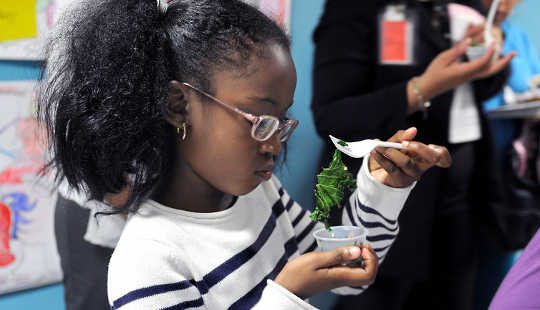 It’s back-to-school time in the United States, and for countless children across the nation, it’s also time to get back into the school garden.
It’s back-to-school time in the United States, and for countless children across the nation, it’s also time to get back into the school garden. Dog owners often notice their pets watching televisions, computer screens and tablets. But what is going on in their pooch’s head? Indeed, by tracking their vision using similar methods used on humans, research has found that domestic dogs do prefer certain images and videos.
Dog owners often notice their pets watching televisions, computer screens and tablets. But what is going on in their pooch’s head? Indeed, by tracking their vision using similar methods used on humans, research has found that domestic dogs do prefer certain images and videos. If woven into clothing, a new low-cost, plastic-based textile could cool your body far more efficiently than is possible with the natural or synthetic fabrics in clothes we wear today.
If woven into clothing, a new low-cost, plastic-based textile could cool your body far more efficiently than is possible with the natural or synthetic fabrics in clothes we wear today. The Williams’ residence in suburban Melbourne is home to three dogs and five humans. Life is often chaotic as each member of the household negotiates for space and attention.
The Williams’ residence in suburban Melbourne is home to three dogs and five humans. Life is often chaotic as each member of the household negotiates for space and attention. Tiny, biointensive operations show smallholder farmers from around the world how they can grow far more food than conventional approaches.
Tiny, biointensive operations show smallholder farmers from around the world how they can grow far more food than conventional approaches. The Animal Messenger teachings revealed to me the true meaning of sanctuary: a place to feel safe, a place where one can be completely oneself, a place of deep connection on a heart and spirit level, a place of love, honor, and respect for all beings...
The Animal Messenger teachings revealed to me the true meaning of sanctuary: a place to feel safe, a place where one can be completely oneself, a place of deep connection on a heart and spirit level, a place of love, honor, and respect for all beings...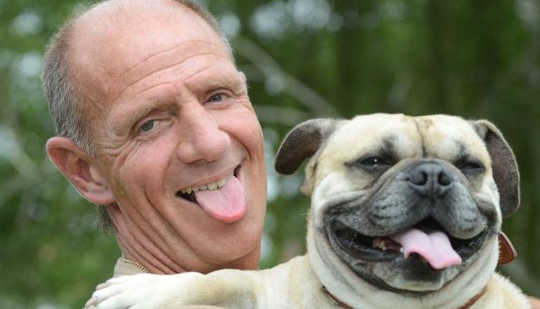 Given the choice, many dogs prefer praise from their owners rather than food, according to one of the first studies to combine brain-imaging data with behavioral experiments to explore canine reward preferences.
Given the choice, many dogs prefer praise from their owners rather than food, according to one of the first studies to combine brain-imaging data with behavioral experiments to explore canine reward preferences.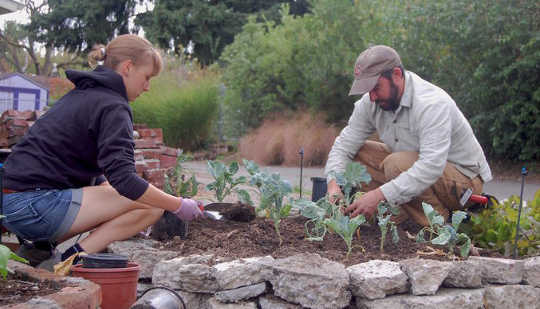 On a recent Monday evening in Seattle’s Central District, a handful of people gathered to work on a community farm. They pulled weeds, talked about the best ways to string up tomatoes, checked the progress of the greens and beans, harvested radishes and planted wildflowers.
On a recent Monday evening in Seattle’s Central District, a handful of people gathered to work on a community farm. They pulled weeds, talked about the best ways to string up tomatoes, checked the progress of the greens and beans, harvested radishes and planted wildflowers.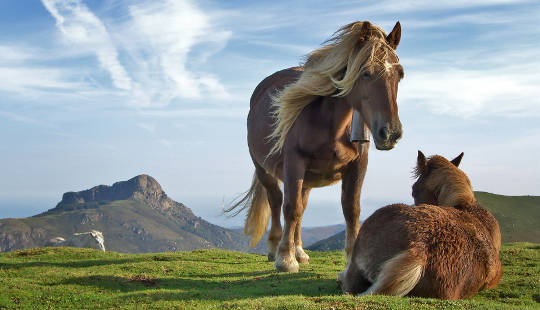 As I became more adept at motivating my horse, focusing her attention, and gaining her respect, relationships at home and work improved. People commented on the change, yet no one could pinpoint what had shifted. The plot thickened as I gained more knowledge about instinctual horse behavior.
As I became more adept at motivating my horse, focusing her attention, and gaining her respect, relationships at home and work improved. People commented on the change, yet no one could pinpoint what had shifted. The plot thickened as I gained more knowledge about instinctual horse behavior. In treating stress-related disorders in animals that we share our lives with, we must first look honestly at ourselves. How is the stress that we are carrying affecting them? Animals who are closely knit with their human families experience extreme stress when their humans do.
In treating stress-related disorders in animals that we share our lives with, we must first look honestly at ourselves. How is the stress that we are carrying affecting them? Animals who are closely knit with their human families experience extreme stress when their humans do.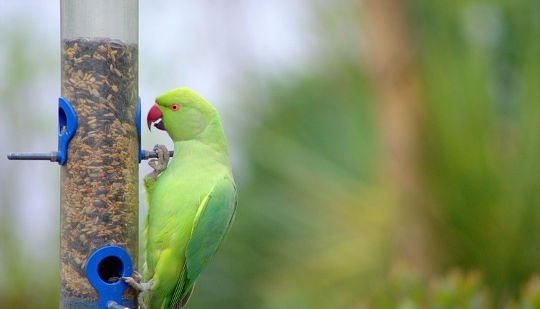 Love them or hate them, ring-necked parakeets have invaded Europe and they’re here to stay. Already a staple of many urban parks and gardens around the UK, some of these charismatic bright green birds are now so comfortable in their new surroundings that they will happily sit and feed from your hand.
Love them or hate them, ring-necked parakeets have invaded Europe and they’re here to stay. Already a staple of many urban parks and gardens around the UK, some of these charismatic bright green birds are now so comfortable in their new surroundings that they will happily sit and feed from your hand.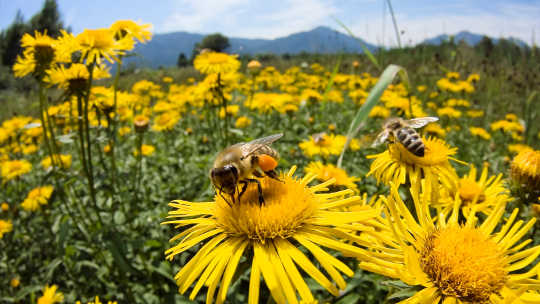 Bees provide us with an invaluable service by pollinating plants, an indispensable part of natural and agricultural ecosystems. This is why declining bee populations are such a big concern.
Bees provide us with an invaluable service by pollinating plants, an indispensable part of natural and agricultural ecosystems. This is why declining bee populations are such a big concern.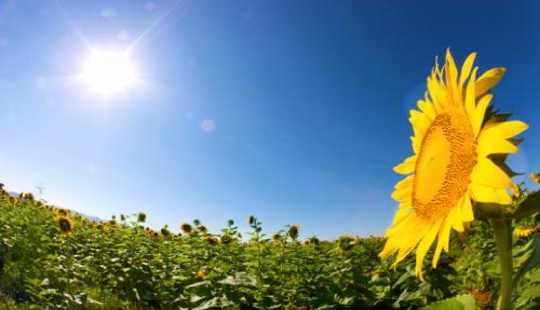 Plant biologists have discovered how sunflowers use their internal circadian clock, acting on growth hormones, to follow the sun during the day as they grow.
Plant biologists have discovered how sunflowers use their internal circadian clock, acting on growth hormones, to follow the sun during the day as they grow.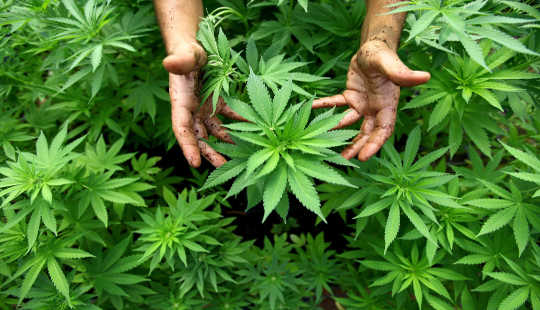 Cannabis continues to be the world’s favourite illicit drug with around 147m people using it annually. However, there are fears that the drug is becoming increasingly potent and that it could pose a public health risk. But how reliable is the evidence? And is it really getting stronger?
Cannabis continues to be the world’s favourite illicit drug with around 147m people using it annually. However, there are fears that the drug is becoming increasingly potent and that it could pose a public health risk. But how reliable is the evidence? And is it really getting stronger? The ideas below are from the Great Neighborhood Book, a collaboration between OTC Senior Fellow Jay Walljasper and Project for Public Spaces. Walljasper is a Minneapolis-based speaker and consultant about how to strengthen communities.
The ideas below are from the Great Neighborhood Book, a collaboration between OTC Senior Fellow Jay Walljasper and Project for Public Spaces. Walljasper is a Minneapolis-based speaker and consultant about how to strengthen communities.